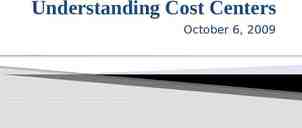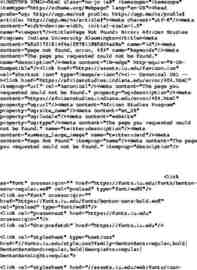Writing Contexts: E-mail or Text? Dr. Robert T. Koch Jr. Center
17 Slides81.03 KB
Writing Contexts: E-mail or Text? Dr. Robert T. Koch Jr. Center for Writing Excellence February 10, 2009
Goals Understand the cultural difference between texting and e-mail Understand audience awareness in electronic correspondence Understand the limitations of text messaging in professional settings Understand the expected conventions of e-mail
Texting vs. E-mail Culture Texting Audience Informal Correspondence Fast Likely anonymous Limited space E-mail Audience Formal Correspondence Slower Not likely anonymous Unlimited space
Who is your audience? Texting Friends Similar education Casual contacts May have personal information May not command respect Generally do not expect proper language use E-mail Professionals Advanced degrees Not casual contacts Probably doesn’t have your personal information Expect respect Expect proper language use
Texting a Lack of Professionalism (#1) Correspondence Number #1 (From Unknown Student to Dr. Baker) From: [email protected] Sent: Tuesday, June 4, 2010 1:31 PM To: [email protected] Subject: Had a wreck an cant make it to school Analysis: The Professor who received this message: 1. Does not know who sent it; 2. Knows that the person is incapable of properly writing a clear message; 3. Can only guess about the condition of the person involved
Texting a Lack of Professionalism (#2) Correspondence #2 (From Dr. Baker to Unknown Student) Who are you? Are you ok? Dr. Butch Baker Analysis: The faculty member must seek clarifying information. 1. Time and energy is wasted. 2. Faculty frustration level has increased. 3. Student reputation and credibility may decrease.
Texting a Lack of Professionalism (#3) Correspondence #3 (From Unknown Student to Dr. Baker) Oh my bad dr b its candi stickmaker Analysis: 1. Lackadaisical attitude (“Oh my bad”). 2. The student doesn’t care enough to spell either name correctly. 3. Still no idea if the student (Candi) is ok. 4. Candi’s credibility is as damaged as the car.
The Problem When you use text messaging for a professional audience, or when you use text message language in email correspondence, you almost always damage your credibility and your professional relationship with your faculty.
The Solution Faculty generally prefer complete sentences with proper attention to English language conventions. When in doubt, assume that short bursts of incomplete, inaccurate thought without clarity in spelling, punctuation, and capitalization (text messaging) is a bad idea, whether you are texting or sending an email.
E-Mail Subject Line Subject Line Professionals need to know what the subject or purpose of your message is. Ex. Is there class today? Ex. I have the flu At minimum, put your name and course or group affiliation in the subject heading Ex. Toby Shore – EN 112 Ex. Gene Splizer – Biology Club
E-Mail Greeting Greeting Option #1: Use a formal greeting followed by a comma or colon. Ex. Dear Dr. Baker: Ex. Dear Dean James, Option #2: Follow a memo format. Use no greeting, but the first thing you write should be pleasant. Ex. I hope you are having a great day. Ex. It was great to speak with you yesterday.
E-Mail Body (#1) Content Some people receive as many as 100 or more professional correspondences each day. For them, e-mail is a work tool, not a tool for casual correspondence. Therefore: Do not send forwards, especially to a whole list Do not advertise events, sales, etc., that are unrelated to the work at hand Keep content short, to the point, and use lists whenever possible.
E-Mail Body (#2) Tone Always use a respectful or professional tone. Remember, no one can hear your jokes, which can often be confused with sarcasm or cynicism. Emoticons are unprofessional, although if you are corresponding with a colleague who is also a friend, this may be acceptable. ALL CAPITALS IS SHOUTING. YOU APPEAR ANGRY, EVEN IF YOU ARE NOT.
E-Mail Body (#3) Writing Style Your sentences should be: Complete – use whole sentences with proper capitalization and punctuation. Concise – get to your point, state it once, clearly, and move on. Treat evidence and discussion the same way. Your E-mail should be: Short – don’t flood your reader with information. Focused – don’t tackle multiple subjects briefly; tackle one of them in depth.
E-Mail Body (#4) Attachments Limit the size -- some e-mail clients will reject large documents Do not paste your paper into the body of an email unless instructed to do so. Attach it as a .doc, .docx, or .rtf type document.
E-Mail Closing Always include your name at the end of your correspondences. Provide an affiliation, especially if you are writing to a faculty or staff member on behalf of a student or professional organization. Provide some contact information – e-mail or phone is always good.
References Lannon, J. M. (2003). Technical communication (9th ed.). New York: Longman.






















